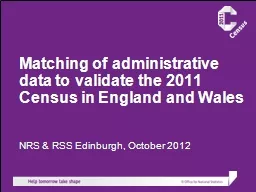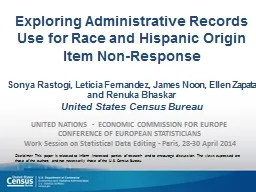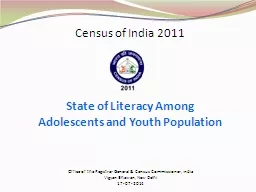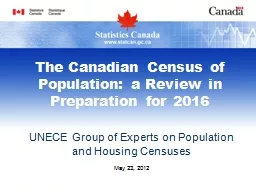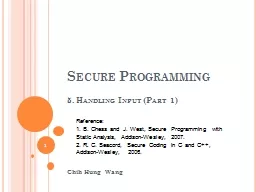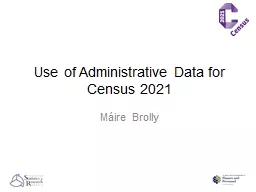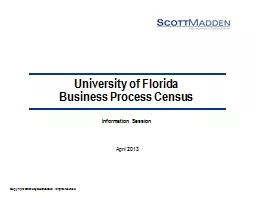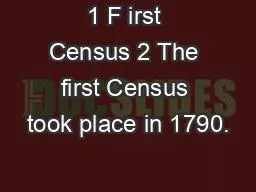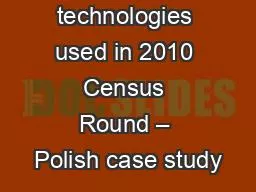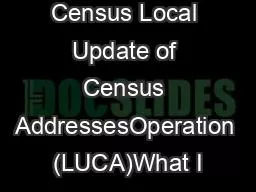PPT-Matching of administrative data to validate the 2011 Census
Author : yoshiko-marsland | Published Date : 2016-08-01
NRS amp RSS Edinburgh October 2012 AGENDA Context 2011 Census quality assurance and the role of administrative data Data matching challenges and solutions Data
Presentation Embed Code
Download Presentation
Download Presentation The PPT/PDF document "Matching of administrative data to valid..." is the property of its rightful owner. Permission is granted to download and print the materials on this website for personal, non-commercial use only, and to display it on your personal computer provided you do not modify the materials and that you retain all copyright notices contained in the materials. By downloading content from our website, you accept the terms of this agreement.
Matching of administrative data to validate the 2011 Census: Transcript
Download Rules Of Document
"Matching of administrative data to validate the 2011 Census"The content belongs to its owner. You may download and print it for personal use, without modification, and keep all copyright notices. By downloading, you agree to these terms.
Related Documents

